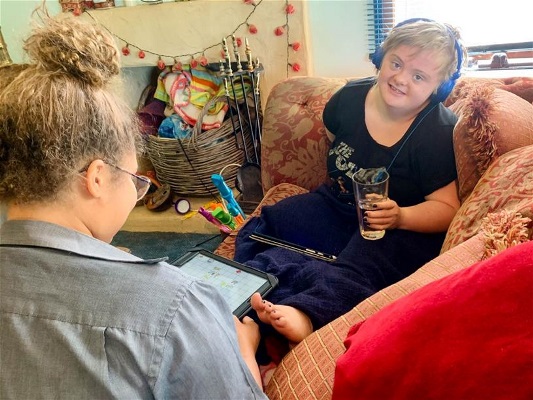Blogs
AT stories and reviews from your peers
How I Funded My Alinker Walking Bike
2 April 2020
 Hello everyone, following my story on the trial of the Alinker walking bike, I finally received my very own one through the NDIS! It took a while to approve, but it was worth the wait.
Hello everyone, following my story on the trial of the Alinker walking bike, I finally received my very own one through the NDIS! It took a while to approve, but it was worth the wait.
I trialled the bike in July and my physiotherapist did an assessment while I completed my trial. My physio did a very comprehensive report and sent the AT application and report to the NDIS for approval. At the end of September, I decided to call the NDIS to see how my application was going and they said it was still with the assessors. I told the case manager I would like to have my application escalated as being stuck at home and indoors was causing me to feel more isolated and my mental health was being impacted significantly.
 It was such good timing when I received my Alinker as we had just moved to a new house to be closer to our grandchildren and close to the beach. Our neighbourhood is very bike friendly, with lots of pathways for bike access. I am now able to go with my husband for walks with the dogs, which I couldn't do before because of the risk of falls. I have also used the Alinker for shopping trips when I am with others who can help carry shopping and my purse etc. but I will be getting a basket for the bike shortly.
It was such good timing when I received my Alinker as we had just moved to a new house to be closer to our grandchildren and close to the beach. Our neighbourhood is very bike friendly, with lots of pathways for bike access. I am now able to go with my husband for walks with the dogs, which I couldn't do before because of the risk of falls. I have also used the Alinker for shopping trips when I am with others who can help carry shopping and my purse etc. but I will be getting a basket for the bike shortly. - First, we identified my goal to safely access the community and engage in social activities and to engage in exercise, supported by my husband and therapists.
- We looked at factors related to me as the AT user including when I was first diagnosed with Transverse Myelitis in the T8 and subsequently also diagnosed with MS. Also mentioned in this section was that a tricycle with pedals would not be suitable as I would not be able to pedal due to the weakness in my legs.
- We discussed and listed life stage outcomes such as, the Alinker will provide motivation to exercise, in turn strengthening lower limbs, providing cardiovascular fitness. It will give me a feeling of not being disabled and being positively involved in the community.
- My physio also completed a Functional Assessment, this where she outlines the difficulties I experience such as, my inability to walk distances, the falls risk, and my peripheral neuropathy, leg muscle spasms etc.
- The trial of the Alinker was completed with a detailed report of me using the bike around the shops and neighbourhood etc. It discussed how the equipment provided excellent strength building exercise with stability and allowed me to walk and rest as needed as my weight is supported by the seat.
- The assessment also outlined the frequency of use. We discussed that I would use the Alinker multiple times a week, mostly for short walks around the neighbourhood and going along with my husband when he walks the dogs.
- We also included the potential risks if AT is not provided in the assessment. As I am a falls risk, and cannot walk independently without AT, the Alinker would improve my exercise tolerance and therefore less social exclusion as it would improve my general confidence getting out into the community.
- We also provided case studies, with my physio outlining that as the Alinker is a relatively new form of AT there is limited research other than personal stories, however Peter Le Witt, the director of the Parkinson's programme at Henry Ford Hospital in Michigan, is starting a trial that provides dozens of patients with Alinkers. He will be comparing their progress with patients who do other forms of exercise. Le Witt calls the Alinker "promising and invigorating" and says some participants have already purchased an Alinker. "If people have fun with this, it'll be motivating for them and they'll get conditioning".
I really hope the points above will help anyone trying to apply for the Alinker through the NDIS as it's all about goals, support evidence, and motivation. Just remember to stress to your allied health therapist, that the more detail the better.
The Alinker has made such a positive difference to my mobility, freedom and self-esteem (and it’s really fun to ride too). I really hope that you can all benefit from this wonderful device. If you would like to see my review of this bike please follow this link.



